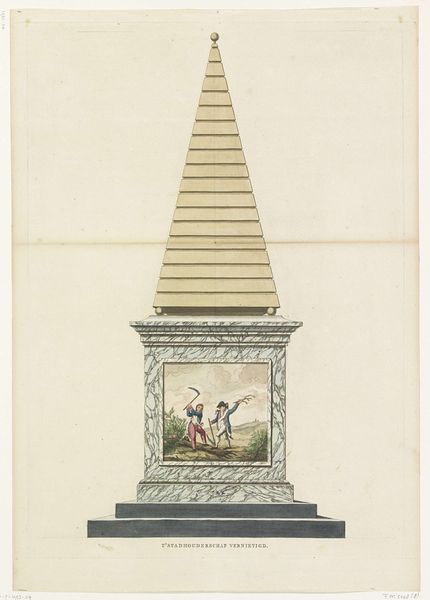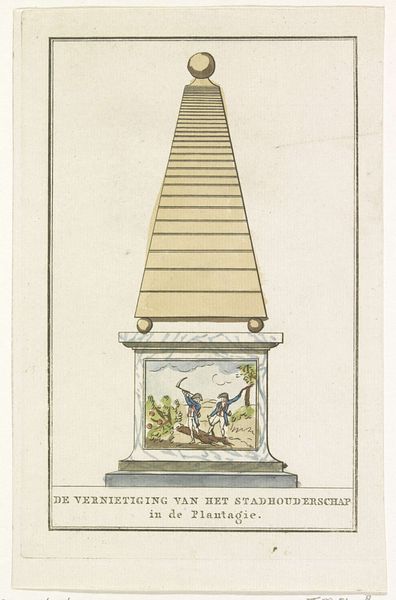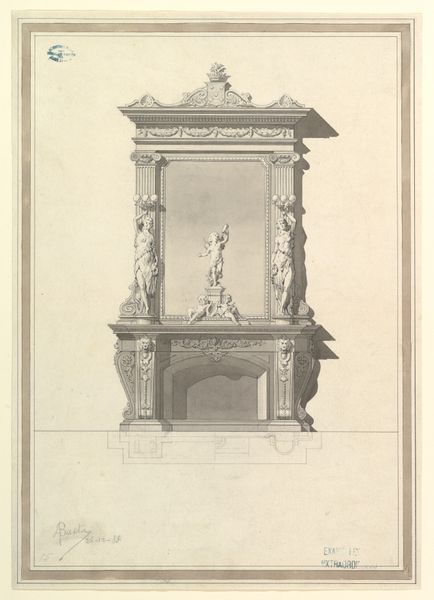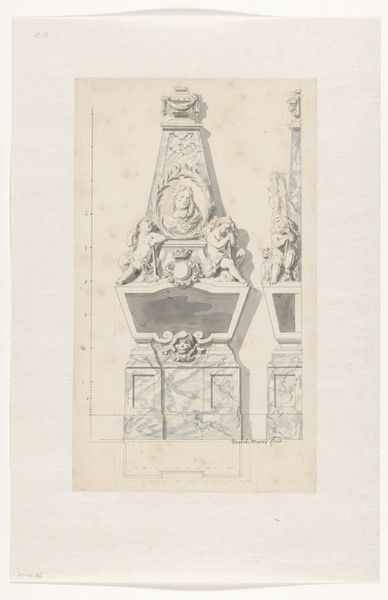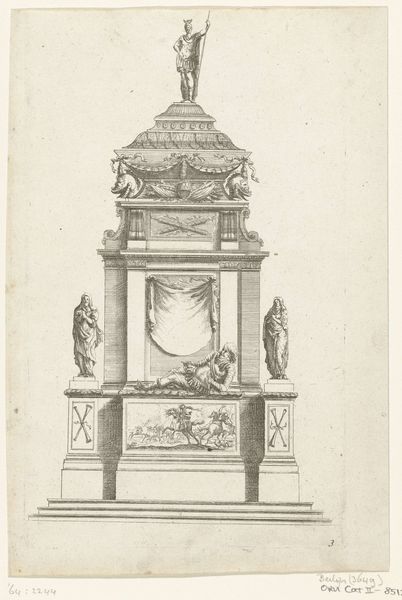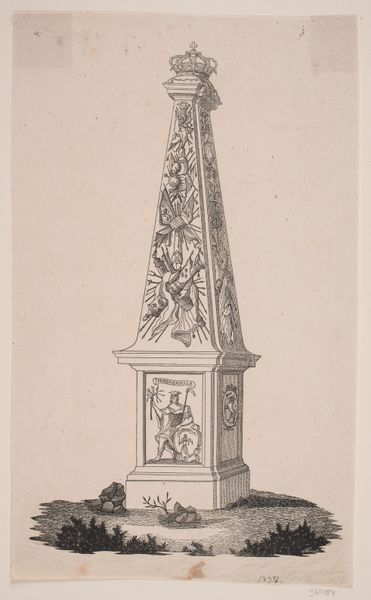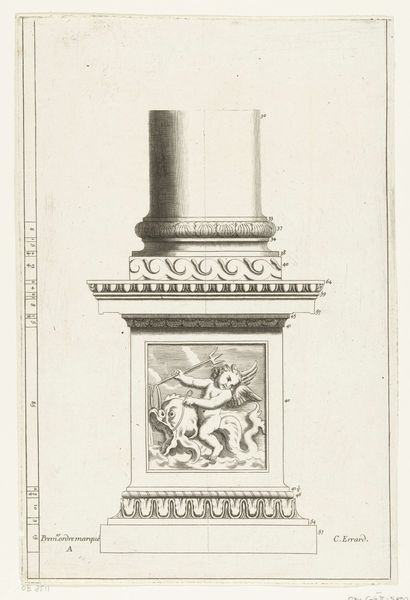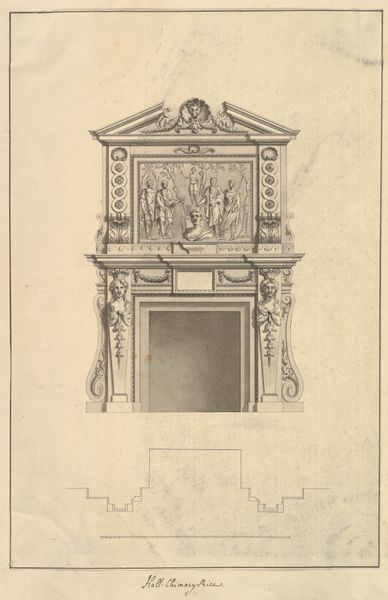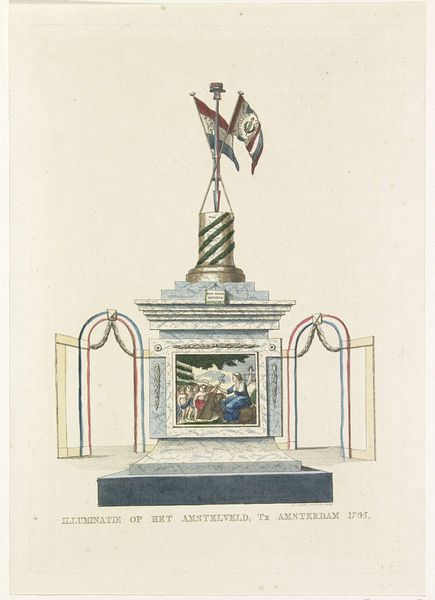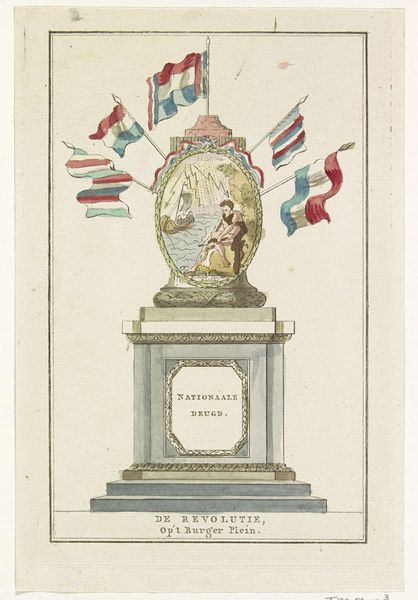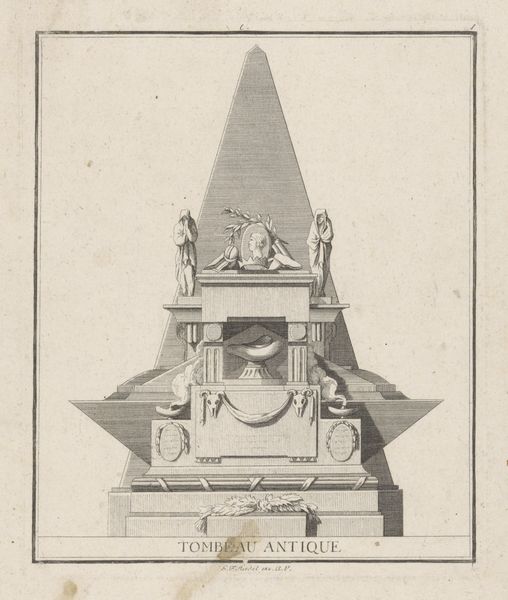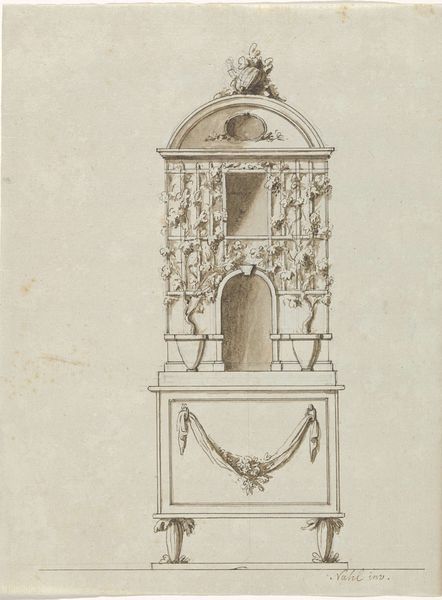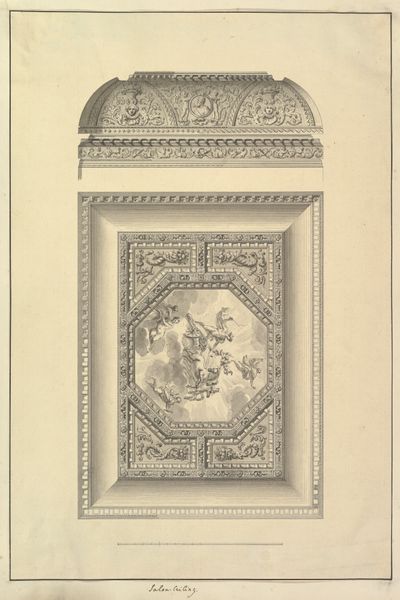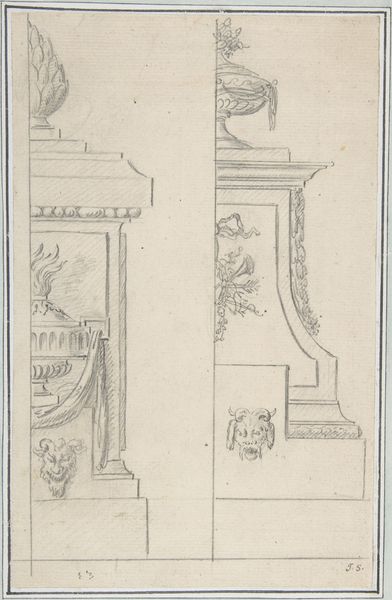
drawing, print, watercolor
#
drawing
#
neoclacissism
# print
#
landscape
#
watercolor
#
watercolour illustration
#
history-painting
Dimensions: height 511 mm, width 381 mm
Copyright: Rijks Museum: Open Domain
This depiction of a decoration commemorating William V’s flight in 1795 presents us with a compelling interplay of symbols. At its core, the scene portrays the historical moment when William V fled, but it's the structure itself—the pyramid—that commands our attention. The pyramid, an ancient symbol of power and endurance, evokes the grand structures of Egypt, embodying notions of stability, hierarchy, and the eternal. Yet, here, its presence is imbued with irony. Is it meant to celebrate the power of William V, or does its use signify something else? Consider how pyramids have been repurposed through time—from royal tombs to modern architectural statements. It is a motif of collective memory, subconsciously triggering ideas of permanence. In this context, the pyramid may carry a subversive tone, questioning the very foundations of the regime it ostensibly honors. The emotional weight of such symbols reveals how visual language can subtly undermine or reinforce prevailing narratives. These symbols endure, but their meaning shifts as time passes.
Comments
No comments
Be the first to comment and join the conversation on the ultimate creative platform.
